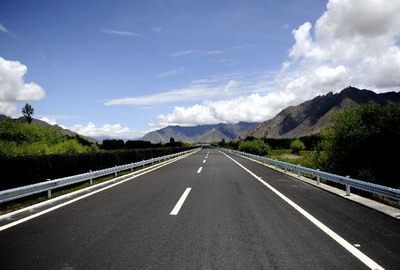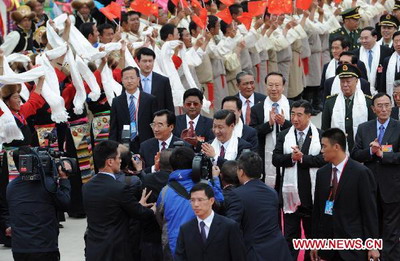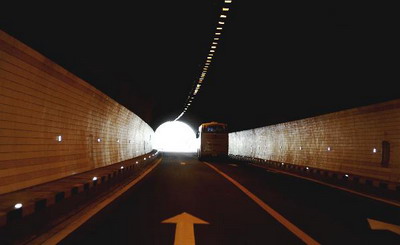|

Photo taken on July 7, 2011 shows the first expressway of southwest China's Tibet Autonomous Region, in Lhasa, capital of Tibet. Tibet's first expressway, a 37.8 kilometers long, four-lane road, were put into service on Sunday, linking Lhasa's city center with Gonggar Airport in the neighboring Shannan Prefecture. (Xinhua/Purbu Zhaxi)
BEIJING, July 17 (Xinhua) -- Since the peaceful liberation of Tibet 60 years ago, the epoch-making progress the region has experienced in the past six decades make people confident that Tibet will embrace a brighter future with the leadership of the Communist Party of China (CPC).
Sixty years ago, the CPC took the Tibetan people out of a dark, underdeveloped, poor and closed society to a new era of bright, developing, prosperous and open society.
Tibet has abolished feudal serfdom and established socialism, and achieved remarkable developments in industrial sectors as well as infrastructure facilities such as highways, railways, airports and telecommunications networks.
Looking back to Tibet's development over the past 60 years, it should be learnt that the leadership of the CPC is a political guarantee of all the progress.
Since 1980, the CPC Central Committee and central government have held five special work conferences focusing on the development of Tibet. Concrete and feasible strategic blueprint and policies have been worked out to ensure that Tibet will develop in the right direction.
The socialist system is another important guarantee of Tibet's prosperity and stability.
The democratic reform and regional autonomy after the peaceful liberation of Tibet have brought democratic rights to the Tibetan people and made them the masters of their own society.
The joint efforts made by the Tibetan people together with the people from other parts of China are providing a strong momentum for Tibet's construction. Thousands of people across the country have devoted their lives for the region's construction and development.

A delegation of China's central government arrives in Lhasa, capital of southwest China's Tibet Autonomous Region, on July 17, 2011. The delegation came to attend the celebrations marking the 60th anniversary of Tibet's peaceful liberation. (Xinhua/Xie Huanchi)
Due to the unique geographic conditions of the region, Tibet needs to follow a scientific development path with distinctive features that suit the situations of the country and the region.
Looking into the future, continuous efforts to adhere to the fundamental policies and practices for Tibet's development are the basic foundation underlying Tibet's further development and future prosperity.
The leadership of the CPC, socialist system, ethnic regional autonomy, reform and opening up policies, and the market economy will always be the cornerstones to ensure and sustain the region's development and long-term stability.
The region's development should gain momentum from efforts to improve the people's livelihood with a people-oriented approach. In 2010, the per capita GDP in Tibet topped 17,000 yuan (2,631 U.S. dollars), which is 34 times the figure in 1959 on a comparable price basis. Great achievements in education, health, transportation and telecommunications in Tibet are evidences that the Tibetan people are enjoying their share of the country's reform and development.
Ethnic and national unity as well as social harmony are also important safeguards for the region's continuous progress.
Over the past 60 years, people from all ethnic groups in Tibet, under the CPC's leadership, have conducted resolute battles to oppose separatism and managed to maintain overall stability in Tibet. The region could not develop without a safe and harmonious social environment.
The Himalayas has witnessed the great changes in Tibet over the past 60 years. Under the leadership of the CPC, people have plenty of reasons to expect that the future for Tibet will be much brighter.

Photo taken on July 7, 2011 shows the tunnel part of the first expressway of southwest China's Tibet Autonomous Region, in Lhasa, capital of Tibet. Tibet's first expressway, a 37.8 kilometers long, four-lane road, were put into service on Sunday, linking Lhasa's city center with Gonggar Airport in the neighboring Shannan Prefecture. (Xinhua/Purbu Zhaxi)
|